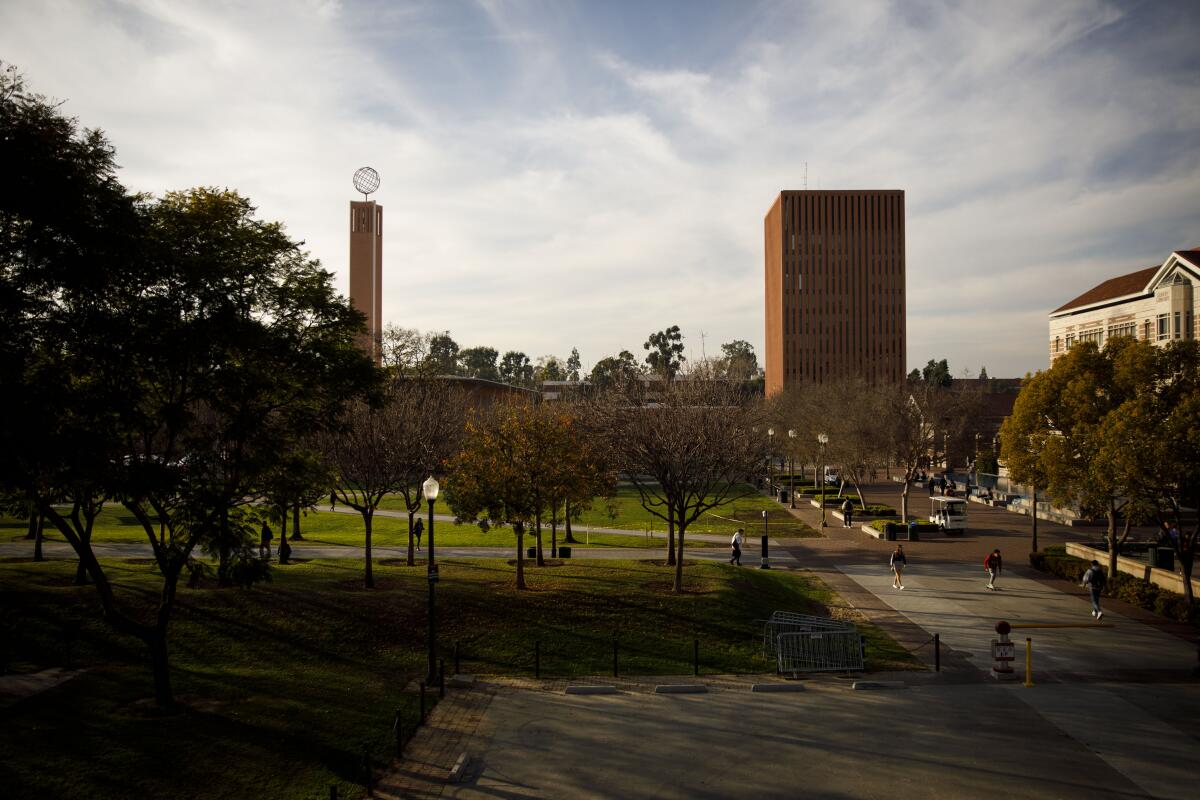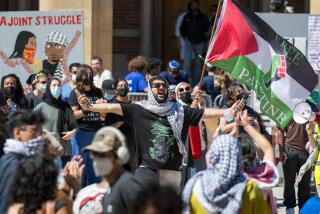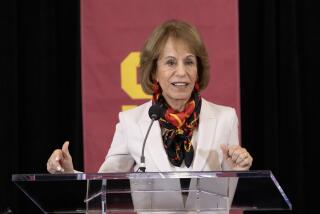USC and prosecutors owe the public a full account of sex abuse inquiries

- Share via
More than three years have passed since the Los Angeles Times revealed that the University of Southern California knew that campus gynecologist George Tyndall had been accused for three decades of sexually assaulting students. We three survivors, along with thousands of other women he saw during his tenure, have waited patiently for the accountability and transparency that USC promised.
We also have watched the criminal justice system at work in similar scandals at Michigan State (Larry Nassar) and Penn State (Jerry Sandusky) and are struck by the stark differences in how USC has been treated by local and state law enforcement. These differences cannot continue to be ignored.
Prosecutors and investigators in both Michigan and Pennsylvania actively investigated not only the perpetrators of sex crimes but also, crucially, the university officials who made the abuse possible. Prosecutors knew these monsters were enabled by the systems around them and sought evidence of this additional criminal misconduct. Their work led to arrests, indictments and convictions reaching up through the highest levels of university administration.
In contrast, at USC, no one other than the doctor has been criminally charged. Legal documents from the recently settled civil case between USC and more than 700 accusers (including all three of us) can shed light on the university’s role in what is alleged to be a 30-year crime spree. They show that dozens of USC officials had heard about his behavior and failed to act to protect students and failed to report Tyndall to authorities or the state medical board. USC paid Tyndall and his attorney hundreds of thousands of dollars and allowed him to resign quietly.
Can anyone imagine the public outcry had Michigan State paid Nassar hush money? Who at USC authorized those checks? Did the officials sign a nondisclosure agreement with Tyndall, binding one or both sides to silence? What other crimes may have been committed at USC in what looks like a cover-up?
Once the scandal was made public in May 2018, the chairman of the USC board of trustees, Rick Caruso, enlisted one of America’s largest law firms for what he said would be “a thorough and independent investigation.” He pledged that the inquiry would conclude by the time students returned for the fall semester and that the results would be made public. Some of us believed in the university’s inquiry and dutifully reported the gut-wrenching details of our abuse to a series of strangers at USC, trusting the promises of Caruso and then-President Max Nikias. The report is still not public, and so many of our lingering questions remain unanswered.
It is not just USC that has failed Tyndall’s accusers and the public. In the weeks after the L.A. Times’ initial reporting, we each went to the police and were interviewed painstakingly by different teams of detectives. The Los Angeles Police Department pulled detectives from their normal duties to interview almost 400 other women who reported potential crimes. Some were sent across the country and even overseas to gather evidence. We took all this as a sign of seriousness of purpose. For some reason, though, criminal charges against even Tyndall were slow to materialize. Our own experiences suggest that it was not the LAPD that allowed the investigation to fade away.
In 2019, the Los Angeles County district attorney at the time, Jackie Lacey — widely known as an astute attorney and proud USC alum — declined to pursue charges against authorities at USC. Had she already concluded there was no need for police and prosecutors to even question them? To us, she seemed to be deliberately playing down the case despite Tyndall’s arrest and growing evidence of his abuses.
So here is another question: Can it be that both the LAPD and the Los Angeles County district attorney’s office have bungled this case, one which involves perhaps the most prolific sexual predator in the country? Or did someone in power prevent investigation of USC officials? The public deserves to know.
Former D.A. Lacey did not file the first set of felony sexual assault charges until one of us, sexual assault prosecutor and Tyndall survivor Audry Nafziger, pointed out publicly in June 2019 that the statute of limitations was running out on crimes against many victims. Lacey filed the first charges later that month.
As two of us saw at Tyndall’s bail hearing in July 2019, the LAPD handed more than 100 crime reports to the D.A.’s office for filing. However, Lacey filed charges related to only 16 victims. The judge then reduced to $1.6 million the $2.1-million bail that had been set at the time of arrest and allowed Tyndall to return home, where he has awaited his preliminary hearing for the last two years with an ankle bracelet to monitor his movements. He has pleaded not guilty, and a preliminary hearing was scheduled just last week, to begin Nov. 29.
Legal depositions and hundreds of thousands of documents from the civil case are available to law enforcement, should they wish to proceed with a thorough criminal investigation.
These papers detail the first complaint USC received about Tyndall, from 1989, while he was working as a research assistant at USC, before he was hired full time. Which university decision-makers read that complaint and decided to do nothing?
Another example: Student Health Center documents demonstrate that medical assistants and patient chaperones tried repeatedly throughout the 1990s to get USC to act on complaints about Tyndall. Did their supervisors try to stop the abuse? These people are identified by name in USC’s documents. Shouldn’t they be questioned by law enforcement?
In the Nassar case, the Michigan attorney general served search warrants on Michigan State, seized computers and other evidence, and prosecuted high-ranking administrators, including the former president. None of this has happened at USC.
USC cannot pretend to have fully reckoned with its role in a sprawling sexual abuse case without coming clean about who knew what about Tyndall and when. If they have turned a blind eye to such abuse or aided a cover-up, decision-makers at powerful institutions such as USC must be outed, ousted and forced to face justice. If L.A.’s current district attorney, George Gascón, will not act, state Atty. Gen. Rob Bonta must step in. Failing that, federal authorities should name a special prosecutor with no ties to USC.
For law enforcement and the university to do nothing further — to consider the case closed after charging Tyndall and paying out $1 billion in settlements — would signal that the most powerful people on campus are untouchable. Is that a message that we, as a society, are willing to tolerate? We three survivors are not.
Lucy Chi received a master’s of health administration and public policy from USC in 2014, Audry Nafziger received a J.D. from USC in 1992, and Allison Rowland received a Ph.D. in public policy from USC in 1997.
More to Read
A cure for the common opinion
Get thought-provoking perspectives with our weekly newsletter.
You may occasionally receive promotional content from the Los Angeles Times.









